Deck 3: SCRS, Triacs, Other Thryristors, Discrete Automation Sensors and Devices
Question
Question
Question
Question
Question
Question
Question
Question
Question
Question
Question
Question
Question
Question
Question
Question
Question
Question
Question
Question
Question
Question
Question
Question
Question
Question
Question
Question
Question
Question
Question
Question
Question
Question
Question
Question
Question
Question
Question
Question
Question
Question
Question
Question
Question
Question
Question
Question
Question
Question
Question
Question
Question
Question
Question
Question
Question
Question
Question
Question
Question
Question
Question
Question
Question
Question
Question
Question
Question
Question
Question
Question
Question
Question
Question
Question
Question
Question
Question
Question

Unlock Deck
Sign up to unlock the cards in this deck!
Unlock Deck
Unlock Deck
1/100
Play
Full screen (f)
Deck 3: SCRS, Triacs, Other Thryristors, Discrete Automation Sensors and Devices
1
Thyristors are regenerative and cannot operate in the linear mode.
True
2
Once a thyristor has been triggered, the trigger current can be removed.
True
3
To protect the SCR from dv/dt false triggering, an LC snubber circuit is used.
False
4
The conduction angle is the angle in degrees when the SCR turns on.

Unlock Deck
Unlock for access to all 100 flashcards in this deck.
Unlock Deck
k this deck
5
The firing delay angle is equal to 180 degrees minus the firing angle.

Unlock Deck
Unlock for access to all 100 flashcards in this deck.
Unlock Deck
k this deck
6
Both the SCR holding current and the gate trigger current parameters decrease with increasing junction temperature.

Unlock Deck
Unlock for access to all 100 flashcards in this deck.
Unlock Deck
k this deck
7
Like the SCR, the Shockley diode remains in the on -state until the forward current drops below the holding current.

Unlock Deck
Unlock for access to all 100 flashcards in this deck.
Unlock Deck
k this deck
8
The structure of the diac is PNP material with a slice on N -material at both ends.

Unlock Deck
Unlock for access to all 100 flashcards in this deck.
Unlock Deck
k this deck
9
R2 and R3 set the intrinsic standoff ratio in the circuit below.
?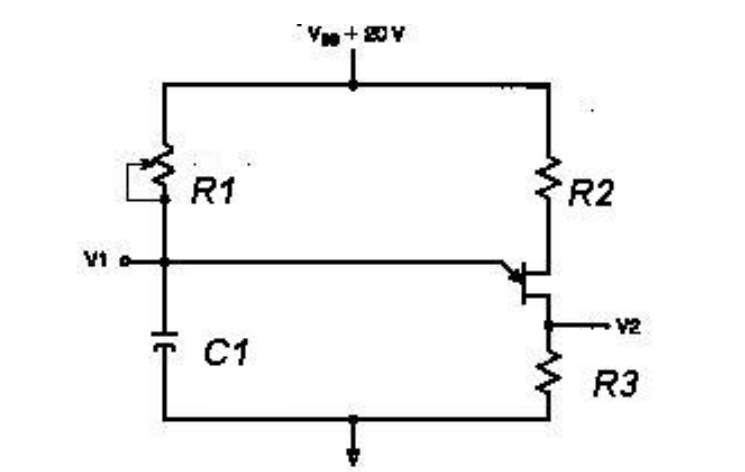
?


Unlock Deck
Unlock for access to all 100 flashcards in this deck.
Unlock Deck
k this deck
10
The PUT is a four -layer device similar to the SCR.

Unlock Deck
Unlock for access to all 100 flashcards in this deck.
Unlock Deck
k this deck
11
The PUT gate reference is device dependent, not circuit dependent.

Unlock Deck
Unlock for access to all 100 flashcards in this deck.
Unlock Deck
k this deck
12
The PUT anode leakage current is the current that flows from the gate to the anode with the cathode shorted.

Unlock Deck
Unlock for access to all 100 flashcards in this deck.
Unlock Deck
k this deck
13
Before the triac, designers used two SCRs in series to accomplish the triac function.

Unlock Deck
Unlock for access to all 100 flashcards in this deck.
Unlock Deck
k this deck
14
The peak repetitive off -state voltage of the triac is the maximum allowed value of repetitive voltage that may be applied and not turn the triac off.

Unlock Deck
Unlock for access to all 100 flashcards in this deck.
Unlock Deck
k this deck
15
The triac firing angle is equal to 180 degrees minus the conduction angle.

Unlock Deck
Unlock for access to all 100 flashcards in this deck.
Unlock Deck
k this deck
16
The triac offers the designer an economical and versatile means of accurately controlling AC power.

Unlock Deck
Unlock for access to all 100 flashcards in this deck.
Unlock Deck
k this deck
17
Low frequency operation is the most reliable for a triac.

Unlock Deck
Unlock for access to all 100 flashcards in this deck.
Unlock Deck
k this deck
18
The GCS is like an SCR except it can be turned off by applying a negative potential to its gate.

Unlock Deck
Unlock for access to all 100 flashcards in this deck.
Unlock Deck
k this deck
19
The SCS is like an SCR except the SCS has an added cathode gate.

Unlock Deck
Unlock for access to all 100 flashcards in this deck.
Unlock Deck
k this deck
20
The SCS switches on with positive pulse on cathode gate or a negative pulse on the anode gate.

Unlock Deck
Unlock for access to all 100 flashcards in this deck.
Unlock Deck
k this deck
21
The SBS has two anodes and two gates.

Unlock Deck
Unlock for access to all 100 flashcards in this deck.
Unlock Deck
k this deck
22
The breakover point of an SBS can be altered with an external zener connected to the SBS.

Unlock Deck
Unlock for access to all 100 flashcards in this deck.
Unlock Deck
k this deck
23
Which of the following method is an accepted method of turning off an SCR?
A) Increasing the leakage current
B) Exceeding the breakdown voltage
C) Removing the gate current
D) Exceeding the dv/dt rating
E) None of the above
A) Increasing the leakage current
B) Exceeding the breakdown voltage
C) Removing the gate current
D) Exceeding the dv/dt rating
E) None of the above

Unlock Deck
Unlock for access to all 100 flashcards in this deck.
Unlock Deck
k this deck
24
The valley point on the characteristic curve of the UJT is where the ___________.
A) internal resistance of B1 increases
B) internal resistance of B2 decreases
C) internal resistance of B2 increases
D) internal resistance of B1 decreases
A) internal resistance of B1 increases
B) internal resistance of B2 decreases
C) internal resistance of B2 increases
D) internal resistance of B1 decreases

Unlock Deck
Unlock for access to all 100 flashcards in this deck.
Unlock Deck
k this deck
25
Triacs operate mostly in quadrant(s)
A) 1.
B) 4.
C) 3.
D) 2.
E) A and C
A) 1.
B) 4.
C) 3.
D) 2.
E) A and C

Unlock Deck
Unlock for access to all 100 flashcards in this deck.
Unlock Deck
k this deck
26
Thyristor(s) with an cathode gate is (are)
A) SCR.
B) Triac.
C) PUT.
D) Diac.
E) A and B
A) SCR.
B) Triac.
C) PUT.
D) Diac.
E) A and B

Unlock Deck
Unlock for access to all 100 flashcards in this deck.
Unlock Deck
k this deck
27
Thyristor(s) with an anode gate is (are)
A) SCR.
B) Triac.
C) PUT.
D) Diac.
E) A and B
A) SCR.
B) Triac.
C) PUT.
D) Diac.
E) A and B

Unlock Deck
Unlock for access to all 100 flashcards in this deck.
Unlock Deck
k this deck
28
? 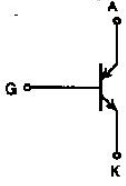
-This transistor model represents the_________.
A) Bidirectional triode thyristor
B) Gate controlled switch
C) Silicon bilateral switch
D) Silicon controlled switch
E) None of the above

-This transistor model represents the_________.
A) Bidirectional triode thyristor
B) Gate controlled switch
C) Silicon bilateral switch
D) Silicon controlled switch
E) None of the above

Unlock Deck
Unlock for access to all 100 flashcards in this deck.
Unlock Deck
k this deck
29
? 
-The thryistor that does not have two anodes is the________.
A) silicon controlled switch
B) silicon bilateral switch
C) diac
D) triac
E) none of the above

-The thryistor that does not have two anodes is the________.
A) silicon controlled switch
B) silicon bilateral switch
C) diac
D) triac
E) none of the above

Unlock Deck
Unlock for access to all 100 flashcards in this deck.
Unlock Deck
k this deck
30
With the anode connected to the positive lead of an ohmmeter and the cathode to the negative lead, a good SCR will conduct when __________
A) the gate is connected to the anode
B) the gate is connected to the cathode
C) the gate is grounded
D) the gate open
A) the gate is connected to the anode
B) the gate is connected to the cathode
C) the gate is grounded
D) the gate open

Unlock Deck
Unlock for access to all 100 flashcards in this deck.
Unlock Deck
k this deck
31
Which of the following is not a characteristic of a triac?
A) Either a positive or negative gate signal will turn it on
B) It can conduct current in either direction
C) It has an internal intrinsic standoff ratio
D) It is a three terminal device
A) Either a positive or negative gate signal will turn it on
B) It can conduct current in either direction
C) It has an internal intrinsic standoff ratio
D) It is a three terminal device

Unlock Deck
Unlock for access to all 100 flashcards in this deck.
Unlock Deck
k this deck
32
Match the device with its function.
-SCR
A) Breakover thyristor
B) Reverse blocking thyristor
C) Bidirectional thyristo
-SCR
A) Breakover thyristor
B) Reverse blocking thyristor
C) Bidirectional thyristo

Unlock Deck
Unlock for access to all 100 flashcards in this deck.
Unlock Deck
k this deck
33
Match the device with its function.
-Triac
A) Breakover thyristor
B) Reverse blocking thyristor
C) Bidirectional thyristo
-Triac
A) Breakover thyristor
B) Reverse blocking thyristor
C) Bidirectional thyristo

Unlock Deck
Unlock for access to all 100 flashcards in this deck.
Unlock Deck
k this deck
34
Match the device with its function.
-Diac
A) Breakover thyristor
B) Reverse blocking thyristor
C) Bidirectional thyristo
-Diac
A) Breakover thyristor
B) Reverse blocking thyristor
C) Bidirectional thyristo

Unlock Deck
Unlock for access to all 100 flashcards in this deck.
Unlock Deck
k this deck
35
Match the device with its function.
-Unijunction transistor
A) Breakover thyristor
B) Reverse blocking thyristor
C) Bidirectional thyristo
-Unijunction transistor
A) Breakover thyristor
B) Reverse blocking thyristor
C) Bidirectional thyristo

Unlock Deck
Unlock for access to all 100 flashcards in this deck.
Unlock Deck
k this deck
36
Match the device with its function.
-Shockley diode
A) Breakover thyristor
B) Reverse blocking thyristor
C) Bidirectional thyristo
-Shockley diode
A) Breakover thyristor
B) Reverse blocking thyristor
C) Bidirectional thyristo

Unlock Deck
Unlock for access to all 100 flashcards in this deck.
Unlock Deck
k this deck
37
Match the device t o the schematic symbol.
-PUT
A)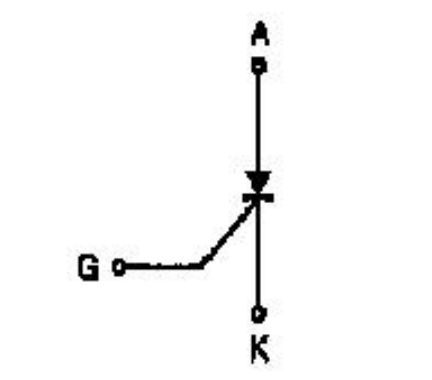
B) ?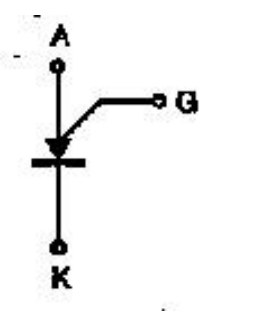
-PUT
A)

B) ?


Unlock Deck
Unlock for access to all 100 flashcards in this deck.
Unlock Deck
k this deck
38
Match the device t o the schematic symbol.
-Shockley diode
A)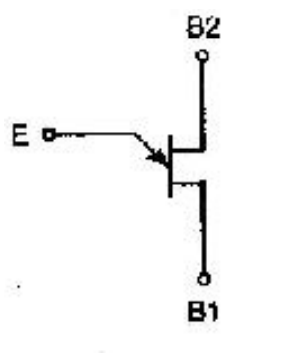
B)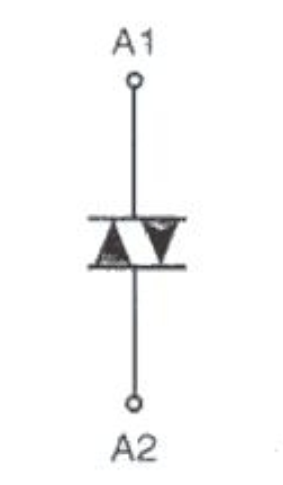
C)
-Shockley diode
A)

B)

C)


Unlock Deck
Unlock for access to all 100 flashcards in this deck.
Unlock Deck
k this deck
39
Match the device t o the schematic symbol.
-Diac
A)
B)
C)
-Diac
A)

B)

C)


Unlock Deck
Unlock for access to all 100 flashcards in this deck.
Unlock Deck
k this deck
40
Match the device t o the schematic symbol.
-UJT
A)
B)
C)
-UJT
A)

B)

C)


Unlock Deck
Unlock for access to all 100 flashcards in this deck.
Unlock Deck
k this deck
41
The six reasons sensors are used could be sumarized as: protect humans and machines from harm, for part identification and quality, for problem analysis, and to produce the fastest possible production.

Unlock Deck
Unlock for access to all 100 flashcards in this deck.
Unlock Deck
k this deck
42
Sensors are non -contact type devices, have electronics cirucits to generate the measurement, have numerous output circuit options, are always faster than switches , and require an external source of power.

Unlock Deck
Unlock for access to all 100 flashcards in this deck.
Unlock Deck
k this deck
43
Inductive type sensors use an electromagnetic field to sense the presence of a part.

Unlock Deck
Unlock for access to all 100 flashcards in this deck.
Unlock Deck
k this deck
44
Inductive sensors can only detect parts that have some magnetic material present.

Unlock Deck
Unlock for access to all 100 flashcards in this deck.
Unlock Deck
k this deck
45
A part entering the electric field of a capacitive proximity sensor causes the sensor output to change.

Unlock Deck
Unlock for access to all 100 flashcards in this deck.
Unlock Deck
k this deck
46
Two of the five types of proximity sensors offered by vendors are wand and rectangular.

Unlock Deck
Unlock for access to all 100 flashcards in this deck.
Unlock Deck
k this deck
47
In general unshielded sensors have a larger sensing distance and a wider sensing area.

Unlock Deck
Unlock for access to all 100 flashcards in this deck.
Unlock Deck
k this deck
48
The most popular type of proximity sensor style is the cylindrical threaded barrel type.

Unlock Deck
Unlock for access to all 100 flashcards in this deck.
Unlock Deck
k this deck
49
Capacitive proximity sensors generate eddy currents in the parts entering their electric field.

Unlock Deck
Unlock for access to all 100 flashcards in this deck.
Unlock Deck
k this deck
50
If you are required to select a sensor to detect a plastic part and you need the maximum distance possible, then you would choose an unshielded capacitive sensor.

Unlock Deck
Unlock for access to all 100 flashcards in this deck.
Unlock Deck
k this deck
51
If you are required to select a sensor to detect an aluminum part and you need the a very narrow sensing field, then you would choose an unshielded inductive sensor.

Unlock Deck
Unlock for access to all 100 flashcards in this deck.
Unlock Deck
k this deck
52
A thin flat plate and large solid block of the same metal are sensed by an inductive proximity sensor, the large solid block would be sensed at a greater distance than the thin flat plate since it would have large eddy current values.

Unlock Deck
Unlock for access to all 100 flashcards in this deck.
Unlock Deck
k this deck
53
Mutual interference is only a problem when proximity sensors from different vendors are used too close together.

Unlock Deck
Unlock for access to all 100 flashcards in this deck.
Unlock Deck
k this deck
54
An inductive proximity sensor's output turns on when the internal oscilator starts oscillating but the capacitive proximity sensor operation is just the opposite.

Unlock Deck
Unlock for access to all 100 flashcards in this deck.
Unlock Deck
k this deck
55
Both inductive and capacitive proximity sensors can sense package contents through the packaging material.

Unlock Deck
Unlock for access to all 100 flashcards in this deck.
Unlock Deck
k this deck
56
New setting distances for proximity sensors require experiment data for the actual sensing distance to make the calculations.

Unlock Deck
Unlock for access to all 100 flashcards in this deck.
Unlock Deck
k this deck
57
The two major components present in all photoelectric sensors are a source of light and a receiver to detect the light.

Unlock Deck
Unlock for access to all 100 flashcards in this deck.
Unlock Deck
k this deck
58
Photoelectric sensors have five components that include a light source, light detector, logic circuit, lens, and output switching device.

Unlock Deck
Unlock for access to all 100 flashcards in this deck.
Unlock Deck
k this deck
59
Photoelectric sensors have a much greater range than proximity type sensors.

Unlock Deck
Unlock for access to all 100 flashcards in this deck.
Unlock Deck
k this deck
60
The photoelectric margin parameter is also called gain multiplier.

Unlock Deck
Unlock for access to all 100 flashcards in this deck.
Unlock Deck
k this deck
61
If a photoelectric sensor has a margin of 20, then the light received by the sensor is 20 larger than the light necessary to turn on the sensor.

Unlock Deck
Unlock for access to all 100 flashcards in this deck.
Unlock Deck
k this deck
62
Electronic sensors can be wired in AND type of circuits but the output electronics does not permit OR type of logic to be used.

Unlock Deck
Unlock for access to all 100 flashcards in this deck.
Unlock Deck
k this deck
63
Vision systems can be use to count the number of holes or features on a part, but are not capable of measuring the size the features.

Unlock Deck
Unlock for access to all 100 flashcards in this deck.
Unlock Deck
k this deck
64
Vision systems used in range finding require the use of two or more cameras.

Unlock Deck
Unlock for access to all 100 flashcards in this deck.
Unlock Deck
k this deck
65
Vision systems come in two basic configurations: imaging arrays and linear arrays.

Unlock Deck
Unlock for access to all 100 flashcards in this deck.
Unlock Deck
k this deck
66
The __________type of capacitive proximity sensors is one of two types available.
A) conductive
B) shielded
C) dielectric
D) unshielded
E) All of the above
A) conductive
B) shielded
C) dielectric
D) unshielded
E) All of the above

Unlock Deck
Unlock for access to all 100 flashcards in this deck.
Unlock Deck
k this deck
67
Inductive type sensors could detect a part that had __ material present
A) Water
B) Wood
C) Copper
D) Plastic
E) None of the above
Material present.
A) Water
B) Wood
C) Copper
D) Plastic
E) None of the above
Material present.

Unlock Deck
Unlock for access to all 100 flashcards in this deck.
Unlock Deck
k this deck
68
If metal switch boxes are passing the sensor location at 30 mm then the best choice for a sensor would be
A) Through beam photoelectric.
B) Diffused beam photoelectric.
C) Capacitive proximity.
D) Inductive proximity.
E) None of the above
A) Through beam photoelectric.
B) Diffused beam photoelectric.
C) Capacitive proximity.
D) Inductive proximity.
E) None of the above

Unlock Deck
Unlock for access to all 100 flashcards in this deck.
Unlock Deck
k this deck
69
If bottles of shampoo are passing the sensor location at a 100 mm distance and the sensor could be mounted on either side of the conveyor, then the best choice for a sensor would be
A) Capacitive proximity.
B) Transmitted -beam photoelectric.
C) Retroreflective photoelectric.
D) Inductive proximity.
E) None of the above
A) Capacitive proximity.
B) Transmitted -beam photoelectric.
C) Retroreflective photoelectric.
D) Inductive proximity.
E) None of the above

Unlock Deck
Unlock for access to all 100 flashcards in this deck.
Unlock Deck
k this deck
70
If pill boxes are passing the sensor location at a 40 mm distance and the sensor can only be mounted on one side of the conveyor, then the best choice for a sensor would be
A) Inductive proximity.
B) Capacitive proximity.
C) Transmitted -beam photoelectric.
D) Diffused -beam photoelectric.
E) None of the above
A) Inductive proximity.
B) Capacitive proximity.
C) Transmitted -beam photoelectric.
D) Diffused -beam photoelectric.
E) None of the above

Unlock Deck
Unlock for access to all 100 flashcards in this deck.
Unlock Deck
k this deck
71
The diffused mode sensor used when high background light is present is
A) Fixed focus diffused mode sensor.
B) Wide angle diffuse mode sensor.
C) Distance measurement diffused mode sensor.
D) Background suppression diffused mode sonsor.
E) None of the above
A) Fixed focus diffused mode sensor.
B) Wide angle diffuse mode sensor.
C) Distance measurement diffused mode sensor.
D) Background suppression diffused mode sonsor.
E) None of the above

Unlock Deck
Unlock for access to all 100 flashcards in this deck.
Unlock Deck
k this deck
72
A current sinking output
A) has current flowing into the output.
B) is associated with an NPN output transistor.
C) has current flowing out of the output.
D) Both A and B
E) Both A and C
A) has current flowing into the output.
B) is associated with an NPN output transistor.
C) has current flowing out of the output.
D) Both A and B
E) Both A and C

Unlock Deck
Unlock for access to all 100 flashcards in this deck.
Unlock Deck
k this deck
73
The sensor output that has 100 percent isolation between the sensor power and the power of the interfaced device.
A) SCR recitifier output
B) Single pin current sinking output
C) NPN and PNP with switchable outputs
D) Field effect transistor output
E) None of the above
A) SCR recitifier output
B) Single pin current sinking output
C) NPN and PNP with switchable outputs
D) Field effect transistor output
E) None of the above

Unlock Deck
Unlock for access to all 100 flashcards in this deck.
Unlock Deck
k this deck
74
When you match a sensor output to a controller input you should
A) have the opposite for the input that you used for the output.
B) have a current sourcing at both the input and output.
C) have a current sinking at both the input and output.
D) not worry about the type it does not make any difference.
A) have the opposite for the input that you used for the output.
B) have a current sourcing at both the input and output.
C) have a current sinking at both the input and output.
D) not worry about the type it does not make any difference.

Unlock Deck
Unlock for access to all 100 flashcards in this deck.
Unlock Deck
k this deck
75
Analog distance sensors are available in photoelectric and ultrasonic configurations. Select the true statement.
A) The ultrasonic are less sensitive to environmental conditions.
B) The photoelectric are the most accurate.
C) Ultrasonic sensor have been developed quite recently.
D) The photoelectric models have the greatest distance sensing capability.
A) The ultrasonic are less sensitive to environmental conditions.
B) The photoelectric are the most accurate.
C) Ultrasonic sensor have been developed quite recently.
D) The photoelectric models have the greatest distance sensing capability.

Unlock Deck
Unlock for access to all 100 flashcards in this deck.
Unlock Deck
k this deck
76
You need a sensor with high margins to count very reflective objects 100 mm from the sensor in a dirty enviroment. What is the best sensor to use?
A) Capacitive proximity
B) Diffuse photoelectric
C) Transmitted beam photoelectric
D) Retroreflective photoelectric
E) None of the above
A) Capacitive proximity
B) Diffuse photoelectric
C) Transmitted beam photoelectric
D) Retroreflective photoelectric
E) None of the above

Unlock Deck
Unlock for access to all 100 flashcards in this deck.
Unlock Deck
k this deck
77
You need a device to sense boxes passing on a conveyor, a sensing distance of 5 feet, that will have all sensor units that require power on one side of conveyor. What is the best sensor to use?
A) Retroreflective photoelectric
B) Transmitted beam photoelectric
C) Diffuse photoelectric
D) Capacitive proximity
E) None of the above
A) Retroreflective photoelectric
B) Transmitted beam photoelectric
C) Diffuse photoelectric
D) Capacitive proximity
E) None of the above

Unlock Deck
Unlock for access to all 100 flashcards in this deck.
Unlock Deck
k this deck
78
The application calls for a sensor to detect metal parts at a fixed distance greater than 60 mm from the sensor location. Access from one side only is permitted.What is the best sensor to use?
A) Retroreflective photoelectric
B) Diffuse photoelectric
C) Transmitted beam photoelectric
D) Inductive proximity
E) None of the above
A) Retroreflective photoelectric
B) Diffuse photoelectric
C) Transmitted beam photoelectric
D) Inductive proximity
E) None of the above

Unlock Deck
Unlock for access to all 100 flashcards in this deck.
Unlock Deck
k this deck
79
The application calls for a sensor to detect the leading edge of plastic parts at a fixed distance about than 20 mm from the sensor location. Access from one side only is permitted. What is the best sensor to use?
A) Diffused beam shart cutoff photoelectric
B) Diffused beam fixed focus photoelectric
C) Capacitive proximity
D) Diffused beam background suppression photoelectric
E) None of the above
A) Diffused beam shart cutoff photoelectric
B) Diffused beam fixed focus photoelectric
C) Capacitive proximity
D) Diffused beam background suppression photoelectric
E) None of the above

Unlock Deck
Unlock for access to all 100 flashcards in this deck.
Unlock Deck
k this deck
80
The application calls for a sensor to detect small parts passing within a few mm of the sensor location. Access from one side only is permitted. What is the best sensor to use?
A) Diffused beam shart cutoff photoelectric
B) Diffused beam background suppression photoelectric
C) Diffused beam fixed focus photoelectric
D) Diffused beam wide angle photoelectric
E) None of the above
A) Diffused beam shart cutoff photoelectric
B) Diffused beam background suppression photoelectric
C) Diffused beam fixed focus photoelectric
D) Diffused beam wide angle photoelectric
E) None of the above

Unlock Deck
Unlock for access to all 100 flashcards in this deck.
Unlock Deck
k this deck



